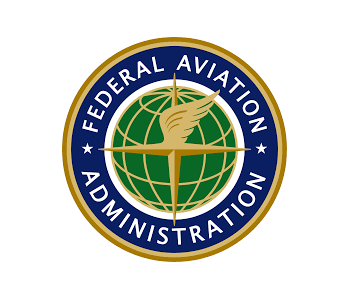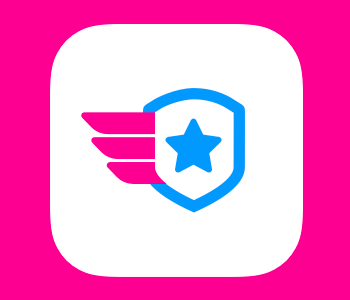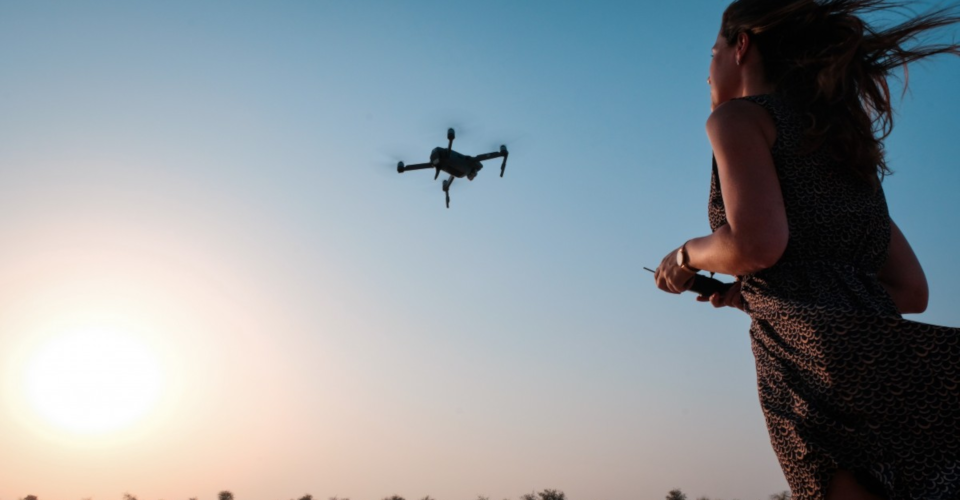A Step-by-Step Guide to Getting Your Part 107 Drone Pilot License (Updated)
Since the FAA created 14 CFR Part 107 back in June 2016, the rules have gone through a good number of changes. The Part 107 rules cover all commercial drone activities. Whether you are already a Part 107 drone license holder or are yet to apply for one, keeping track of these changes is critical to ensuring that you don’t violate any laws.
In this updated guide, we will describe in detail every step that an aspiring commercial drone pilot needs to take to secure a Part 107 remote pilot certificate, or drone license as most people refer to it. This takes into consideration all the changes to the rules that have been made in the last three years.
1. Determine if you need a Part 107 license
Assuming that you already have a drone, ask yourself first: do you need to get a Part 107 remote pilot certificate? The drone license is required for pilots who fly their drones for profit or in aid of any business. A clear-cut example of this requirement is if you intend to take aerial photos and sell them online, or if you’re going to offer drone flight services for a price.
Take note that you don’t need to be directly profiting from your drone flight services for it to qualify as a commercial activity. If you have an unrelated business, but you will be using your aerial photos to advertise it, then that falls in the realms of aiding a business. Even the use of your aerial photos in a free publication could count as commercial use.
However, if you are going to fly your drone purely for fun, then you will not need to get a Part 107 license. You will still need to register your drone with the FAA if it weighs more than 0.55 pounds.
2. Register your drone with the FAA

If your drone weighs at least 0.55 pounds, you need to register it with the FAA – whether you’re flying commercially or recreationally. If you have multiple drones that you will use for commercial operations, you will have to register them separately and get unique serial numbers for each one of them.
Fortunately, the registration process is quick and pretty cheap. Start by heading over to the FAA DroneZone website and selecting the option to register your drone under Part 107. You must be a US citizen or legal permanent resident of at least 13 years of age to complete the registration. You will need to fill out an online form that will prompt for your mailing address, a vail e-mail address, the make and model of your drone, and the details of your credit card or debit card.
IMPORTANT: Register your drone only on the FAA DroneZone portal and NOT on any third-party websites. The FAA does not endorse the use of any of these websites.
You will be charged $5 for drone registration. If you are registering multiple drones, you will have to pay the $5 registration fee for each one.
3. Mark your drone clearly with the serial number
Once you have finished the drone registration process, your drone will be assigned a unique serial number via e-mail. You will need to mark your drone with the serial number in a manner and location that makes it easily visible upon inspection. This was a new rule implemented by the FAA in early 2019 in a bid to ensure the safety of law enforcement or anyone responding to a drone-related incident.
There are a couple of ways to be done properly. You can either print the serial number on a sticker and stick it somewhere conspicuous or engrave it somewhere on the drone’s body. Even writing the serial number is acceptable as long as you can do it clearly and legibly. It might not look good on your drone, but we can’t argue with the FAA’s justification for the new rule.
4. Check if you qualify for the Part 107 knowledge test
Passing the knowledge test is the major hurdle of getting a Part 107 license. Before you even make any effort towards preparing for it, you need to qualify with these basic eligibility requirements:
- Be at least 16 years of age
- Be able to read, write, speak, and understand English
- Be physically and mentally fit to fly a drone
5. Obtain an FAA Tracking Number (Effective January 13, 2020)
At this point, we’re starting to make the preparations to take the Part 107 knowledge test, which is one of the major requirements for getting a drone license. Based on a new rule (which will take effect on January 13, 2020), all applicants for the knowledge test must first secure an FAA Tracking Number (FTN). The change was done in an effort to streamline the airman certification process. The FTN will be a unique identifier that will stay with the individual in the entire course of their career in aviation.
To get your FTN, you must create an account in the Integrated Airman Certification and Rating Application (IACRA) website. Upon successful account creation, you will be assigned a unique FTN. Write it down somewhere you can easily access.
6. Sign up for the Part 107 knowledge test
The scheduling and conduct of the Part 107 knowledge test (and other airman certification tests) are being handled by Computer Assisted Training Service, Inc (CATS). With a network of more than 700 FAA-certified testing centers, you should be able to find one that is conveniently near to you.
To look for the nearest testing center, simply go to the CATS website and do a search by address or state. Once you have identified a preferred testing center, look for the center’s contact details, and get in touch with them to set a schedule. If you already have an FTN, you might be prompted to provide it. You will also need to pay a standard testing fee of $160 (an increase from $150 as of October 1, 2019).
7. Make your preparations

Now that you’ve got a schedule and testing center, all you have to do is to make sure that you pass the knowledge test. You will need a score of at least 70% to pass the test. The knowledge test consists of 60 multiple choice items that have been randomly picked from a much larger pool of questions, ensuring that no two sets are exactly the same.
For best results, we recommend setting aside at least two weeks of serious study time for the knowledge test. Many people prefer signing up for a paid Part 107 training course because of the organization of ideas and depth of content that these courses can provide. Depending on which course you take, you may be granted lifetime access to their content and be given a money-back guarantee should you not pass the knowledge test on your first try.
Pilot Institute offers an excellent Part 107 training course that consists of more than 12 hours of engaging videos, more than 250 quiz questions, and three practice exams. For a discounted price of $174, you get lifetime access to the training materials.

If you don’t have the budget for a paid training course, then there’s still a wealth of free training materials on Part 107 that you can find online. From YouTube videos, online sample exams, study guides, and podcasts, there’s no reason for you not to cover all the topics you’ll need to read up on to pass the exam. Even the FAA has a couple of free study guides and sample questions that you can download. It’ll take a bit of effort to organize these ideas from different sources, but it’s not impossible.
8. Take the knowledge test
On the day of the test, make sure that you show up at your chosen testing center a few minutes before the prescribed time. You may be required to show a valid photo ID before you can take the knowledge test. The testing center should provide you a piece of paper and a pencil for whatever reason you may need them. You will be allowed to bring a calculator and a magnifying glass. However, you will not be allowed to bring your mobile phone to the testing center, so it’s best to leave it in your car or at home.
The knowledge test will be done on a computer inside a closed room. You will be under constant surveillance by a security camera throughout the course of the test. You will be given a copy of the Airman Knowledge Testing Supplement Book, which you’ll use to look up sectional charts, maps, and figures. The knowledge test needs to be completed within two hours.
9. Wait for your scores to be uploaded
Checking of the knowledge test can be done instantly, and some testing centers may let you know the results right away. However, the official results will only be available when they get uploaded to the FAA website within two or three days. If you passed, then that’s great!
The document that shows your results is called the Airman Knowledge Test Report (AKTR). If you already have an FTN, then it should be indicated somewhere in your AKTR.
10. Apply for the Remote Pilot Certificate
At this point, you need to login to your account on the IACRA website and make an application for the Part 107 Remote Pilot Certificate. A record of your successful test results should already be in there because of your FTN.
11. Wait for the TSA background check

Before you will be granted the drone license, you will need to go through a Transportation Security Administration (TSA) background check. There’s really nothing for you to do at this point in the process but to wait for the TSA to do their thing.
No one outside of the authorities can really say what the TSA looks for, but the TSA claims that it’s the same protocol that they do for airline pilots and airport security personnel. You really shouldn’t have a problem as long as you don’t have any aviation-related offense – even people with prior DUIs or felony convictions have been granted the Part 107 drone license.
How long this step takes will depend largely on the backlog of TSA for airmen certification applicants. It can be done in less than a week or a couple of months. All we can tell you is to simply be patient.
12. Print the Temporary Pilot Certificate
You will know that you passed the TSA background check when you receive the Part 107 temporary certificate by e-mail. This temporary certificate is valid for 120 days, or until you receive the permanent certificate. You may fly under Part 107 rules at this point, but make sure that you keep your temporary certificate with you at all times.
13. Receive your permanent license by mail
While your temporary certificate is still valid, your permanent certificate should be making its way to you by regular mail. Once you receive it, scan it digitally, keep a copy, and make sure to bring the original drone license with you whenever you fly your drone for commercial purposes. You may be asked to present your drone license by the appropriate authorities, such as representatives of the FAA or TSA, or by local law enforcement.
What if you fail the knowledge test?
As with any test, the FAA does not expect everyone to make passing marks. If you happen to be in the unfortunate statistic of those who fail the Part 107 knowledge test, don’t fret. You will be allowed to take the knowledge test again after 14 days.
The $150 testing fee you paid for your failed take will not be refunded. If you signed up for any paid training course, you may be eligible for claiming their money-back guarantee.
Those who fail the Part 107 knowledge test will be given a report that summarizes the knowledge areas where they did not perform well. As of a change to be implemented by January 2020, these incorrect responses will be indicated by codes based on the Airman Certification Standard (ACS). This knowledge should be helpful in preparing for the next time that you take the knowledge test.
What to do after?
So, you’ve got your Part 107 drone license. Now what? Beyond the permission that it gives you to fly commercially, the certification also imparts a higher sense of responsibility and accountability on you as a drone pilot. These are just some of the things to keep in mind once you earn your license:
1. Follow the rules
Since you already passed the knowledge test, you should already have a good grasp of the flight rules and restriction of Part 107. The FAA takes the implementation of these rules seriously, and it would be best to follow them if you don’ want to risk having to pay a fee or having your drone license revoked.
2. Keep a drone flight logbook
The FAA very strongly recommends keeping a drone flight logbook for commercial drone pilots. This will help you keep track of your drone’s maintenance status, the number of hours logged, the location of your operations, and the environmental conditions whenever you fly. If you get into a drone-related accident, having a record of your operations can help you resolve any liability issues. It’s your call on whether you want to keep your logs electronically or in an old-fashioned logbook – both are equally valid.
3. Apply for a waiver, if needed
The Part 107 rules specify certain conditions where commercial drone pilots are normally not allowed to fly their drones, such as over a populated area, from a moving vehicle, or beyond visual line-of-sight. However, Part 107-licensed pilots may apply for waivers for these restrictions through the FAA DroneZone portal.
However, you need to realize that most of the waivers that the FAA has granted have been for drone flight at nighttime, and only with the proper mitigating measures. There have also been numerous waivers granted for flying drones at certain airspace classifications. For other flight restrictions, the chances of being granted a waiver aren’t that great.
Recent developments in the FAA’s Remote ID proposal may expand the provision for which the FAA may grant these waivers. Flight beyond visual line-of-sight, in particular, has been touted as one of the reasons for pursuing Remote ID. The final implementation of the proposal is still several months away, and there’s still a lot that can happen.
4. Renew your license after two years
Don’t forget that the Part 107 remote pilot certificate is only valid for two years, after which you’ll need to have it renewed if you intend to continue flying your drone commercially. To do this, you must take and pass a recurrent knowledge test before your 24-month validity period has passed. The recurrent knowledge test is also handled by CATS and will cost you another $150 for the testing fee.
Thankfully, the recurrent knowledge test is slightly shorter than the original knowledge test and has a smaller scope of topics. If you’ve been flying a drone regularly in the last two years, we don’t think you’ll run into any problems. To prove that you have renewed your drone license, you must keep a copy of the results of your recurrent knowledge test with you at all times. No new drone license will be issued.
5. Renew your drone registration after three years
Since the FAA expects drones to change ownership, they have imposed a three-year validity period for the registration status of drones. During the renewal process for drone registration, you will be given a chance to update the information associated with the drone.
Final thoughts
As with other pieces of legislation, the Part 107 rules on commercial drone flight will always be under a state of review and revision. Keeping track of these changes comes with the package of being a Part 107-licensed drone pilot.
We are already seeing huge changes in the rules in the past couple of months, such as the proposal to have commercial drone pilots undergo a knowledge training course instead of a knowledge test to earn the drone license. The FAA is also becoming more open to allowing night operations, with a proposal to integrate a focus on night operations in the current knowledge test and training materials.
Even the implementation of the FAA Tracking Number, although a minor change, may have far-reaching effects on the airmen certification process.
In any case, you can count on us to keep you updated about new developments in drone-related legislation and the Part 107 certification process. The drone industry is still relatively young and will continue to go through growing pains. As drone pilots, the best we can do is to be involved in the growth process.


